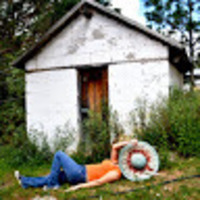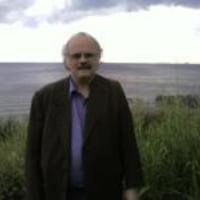Papers by Miriam E. Mery Ruiz
Journal-public economy, Jun 30, 2023
Journal-public economy, Jun 30, 2023
Revista de arquitectura y diseño, Jun 30, 2023

Journal of Urban and Sustainable Development, 2023
18
Article Journal of Urban and Sustainable Development
December 2023, Vol.9 No.25 18-28
Evaluati... more 18
Article Journal of Urban and Sustainable Development
December 2023, Vol.9 No.25 18-28
Evaluation of luminance levels. digital tool or traditional device? case study:
Alameda Park in Saltillo, Mexico
Evaluación de niveles lumínicos ¿herramienta digital o dispositivo tradicional?
caso de estudio: la Alameda en Saltillo, México
MERY-RUIZ, Miriam E.†*, LOPEZ-MONTELONGO, Areli, MOLAR-OROZCO, María Eugenia y
CARMONA-OCHOA, Gabriela
Universidad Autonoma de Coahuila. Unidad Saltillo. Saltillo, Coahuila, 25280, México.
ID 1st Author: Miriam Elizabeth, Mery-Ruiz / ORC ID: 0000-0003-2416-0351, CVU CONAHCYT ID: 508959
ID 1st Co-author: Areli, Lopez-Montelongo / ORC ID: 0000-0001-9664-0237, CVU CONAHCYT ID: 203293
ID 2nd Co-author: María Eugenia, Molar-Orozco / ORC ID: 0000-0001-5357-5893, CVU CONAHCYT ID: 369142
ID 3rd Co-author: Gabriela, Carmona-Ochoa / ORC ID: 0000-0001-9806-2960, CVU CONAHCYT ID: 330379
DOI: 10.35429/JUSD.2023.25.9.18.28 Received: July 10, 2023; Accepted December 30, 2023
Abstract
Assessing luminance levels in outdoor public spaces is
relevant for the lighting design of architectural and urban
environments. This article compares a digital tool and a
traditional device for measuring luminance levels in
outdoor settings, aiming to explore the pros and cons of
each method and offer guidance to public space
designers. The study involves a literature review of
luminance measurement techniques and a comparative
analysis of the results obtained using Fusion Optix
software and a lux meter. Both methods exhibit benefits
and drawbacks, with the choice of method hinging on the
specific context and evaluation objectives. Generally,
digital tools provide a more efficient and precise
measurement of luminance levels, while traditional
devices contribute to a broader understanding of the
lighting environment. It is recommended that a
combination of digital tools and traditional devices be
employed in luminance assessments to achieve the most
accurate and comprehensive results.

Journal Architecture and Design, 2023
This chapter offers a comprehensive exploration of architectural public spaces through a transdis... more This chapter offers a comprehensive exploration of architectural public spaces through a transdisciplinary lens, focusing on morphology, security, and daylight. In the context of urban development, these spaces play a vital role in shaping social interactions, fostering community cohesion, and enhancing the quality of life. The transdisciplinary approach adopted in this research integrates insights from environmental psychology, sustainable architecture, landscape design, architectural anthropology, spatial analysis (space syntax), perception theories, and concepts of self-security. This paper illuminates the complexities involved in the design, usability, and impact of these spaces, aiming to bridge existing knowledge gaps. It further provides practical recommendations for architects, urban planners, policymakers, and other relevant stakeholders. By merging diverse disciplinary perspectives, the paper underscores the importance of a transdisciplinary discourse in the design and utilization of architectural public spaces, contributing to a broader understanding of urban life quality and sustainability.
Journal-Public Economy, 2023
This paper presents a comprehensive approach to managing and analyzing microdata from the Nationa... more This paper presents a comprehensive approach to managing and analyzing microdata from the National Survey of Urban Public Safety (ENSU) by the National Institute of Statistics, Geography, and Informatics (INEGI). The core objective is to elucidate the intricacies of urban public safety perceptions through robust statistical tools and techniques, specifically utilizing Stata software. We focus on the gendered nuances of safety perception in public parks during daylight hours, a critical aspect often overlooked in public safety discourse.











Uploads
Papers by Miriam E. Mery Ruiz
Article Journal of Urban and Sustainable Development
December 2023, Vol.9 No.25 18-28
Evaluation of luminance levels. digital tool or traditional device? case study:
Alameda Park in Saltillo, Mexico
Evaluación de niveles lumínicos ¿herramienta digital o dispositivo tradicional?
caso de estudio: la Alameda en Saltillo, México
MERY-RUIZ, Miriam E.†*, LOPEZ-MONTELONGO, Areli, MOLAR-OROZCO, María Eugenia y
CARMONA-OCHOA, Gabriela
Universidad Autonoma de Coahuila. Unidad Saltillo. Saltillo, Coahuila, 25280, México.
ID 1st Author: Miriam Elizabeth, Mery-Ruiz / ORC ID: 0000-0003-2416-0351, CVU CONAHCYT ID: 508959
ID 1st Co-author: Areli, Lopez-Montelongo / ORC ID: 0000-0001-9664-0237, CVU CONAHCYT ID: 203293
ID 2nd Co-author: María Eugenia, Molar-Orozco / ORC ID: 0000-0001-5357-5893, CVU CONAHCYT ID: 369142
ID 3rd Co-author: Gabriela, Carmona-Ochoa / ORC ID: 0000-0001-9806-2960, CVU CONAHCYT ID: 330379
DOI: 10.35429/JUSD.2023.25.9.18.28 Received: July 10, 2023; Accepted December 30, 2023
Abstract
Assessing luminance levels in outdoor public spaces is
relevant for the lighting design of architectural and urban
environments. This article compares a digital tool and a
traditional device for measuring luminance levels in
outdoor settings, aiming to explore the pros and cons of
each method and offer guidance to public space
designers. The study involves a literature review of
luminance measurement techniques and a comparative
analysis of the results obtained using Fusion Optix
software and a lux meter. Both methods exhibit benefits
and drawbacks, with the choice of method hinging on the
specific context and evaluation objectives. Generally,
digital tools provide a more efficient and precise
measurement of luminance levels, while traditional
devices contribute to a broader understanding of the
lighting environment. It is recommended that a
combination of digital tools and traditional devices be
employed in luminance assessments to achieve the most
accurate and comprehensive results.
Article Journal of Urban and Sustainable Development
December 2023, Vol.9 No.25 18-28
Evaluation of luminance levels. digital tool or traditional device? case study:
Alameda Park in Saltillo, Mexico
Evaluación de niveles lumínicos ¿herramienta digital o dispositivo tradicional?
caso de estudio: la Alameda en Saltillo, México
MERY-RUIZ, Miriam E.†*, LOPEZ-MONTELONGO, Areli, MOLAR-OROZCO, María Eugenia y
CARMONA-OCHOA, Gabriela
Universidad Autonoma de Coahuila. Unidad Saltillo. Saltillo, Coahuila, 25280, México.
ID 1st Author: Miriam Elizabeth, Mery-Ruiz / ORC ID: 0000-0003-2416-0351, CVU CONAHCYT ID: 508959
ID 1st Co-author: Areli, Lopez-Montelongo / ORC ID: 0000-0001-9664-0237, CVU CONAHCYT ID: 203293
ID 2nd Co-author: María Eugenia, Molar-Orozco / ORC ID: 0000-0001-5357-5893, CVU CONAHCYT ID: 369142
ID 3rd Co-author: Gabriela, Carmona-Ochoa / ORC ID: 0000-0001-9806-2960, CVU CONAHCYT ID: 330379
DOI: 10.35429/JUSD.2023.25.9.18.28 Received: July 10, 2023; Accepted December 30, 2023
Abstract
Assessing luminance levels in outdoor public spaces is
relevant for the lighting design of architectural and urban
environments. This article compares a digital tool and a
traditional device for measuring luminance levels in
outdoor settings, aiming to explore the pros and cons of
each method and offer guidance to public space
designers. The study involves a literature review of
luminance measurement techniques and a comparative
analysis of the results obtained using Fusion Optix
software and a lux meter. Both methods exhibit benefits
and drawbacks, with the choice of method hinging on the
specific context and evaluation objectives. Generally,
digital tools provide a more efficient and precise
measurement of luminance levels, while traditional
devices contribute to a broader understanding of the
lighting environment. It is recommended that a
combination of digital tools and traditional devices be
employed in luminance assessments to achieve the most
accurate and comprehensive results.